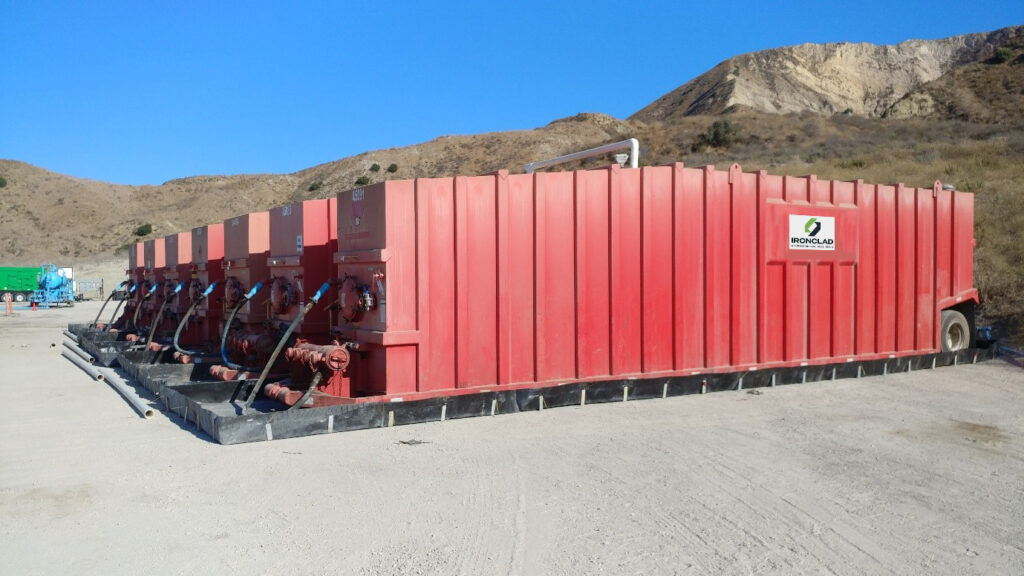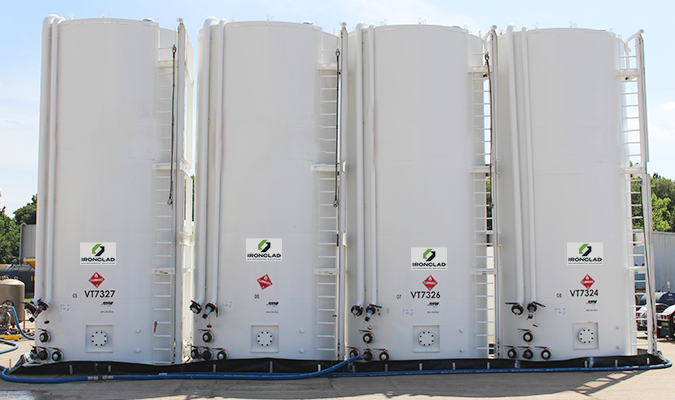Primary Containment Options
Every industry that manufactures or treats hazardous materials requires primary containment solutions. Whether you’re using hazardous chemicals, oil, diesel, or processing waste, any unplanned or uncontrolled release of these materials can cause severe environmental hazards.
Primary containment measures ensure that the material does not react with its immediate surroundings. Effective containment systems reduce direct contact with the stored material, helping you maintain safe working conditions. Retaining hazardous material in a primary container helps avoid the risks of contamination, monetary penalties, and long-term health issues.
Let’s take a closer look at primary containment solutions and the different systems available. We’ll also learn about the loss of primary containment and the difference between primary and secondary containment systems.
What is Primary Containment?
Primary containment is the device or container that industries use to store hazardous materials.
A primary container is the first line of defense against contamination, leaks, and spillages as they remain directly in contact with the hazardous substance.
Industries use a wide range of primary containers made of steel, polyethylene, and geotextile fibers. In addition to the base material, primary containers may have linings and particulate arrest filters. Most containers also include secondary spill containment measures (also known as spill berms) to prevent accidents due to loss of primary containment.
Laboratories, waste treatment facilities, manufacturing industries, and fuel processing units require effective containment measures to reduce environmental risks and ensure safe material handling. Primary containment systems also protect your personnel and property.
OSHA and EPA guidelines require these facilities to include effective containment measures when storing materials that can potentially harm the environment or public health. Bulk liquid storage systems might also require secondary containment efforts since they are so highly prone to leakages, spillages and leaching.

Primary Containment Types
You can choose from a wide range of containment solutions, depending on the fluids you’re handling. Before selecting a suitable container, you must estimate the storage volume and ensure that the stored material is chemically compatible with the storage medium.
For instance, you can select a high-density polyethylene tank for non-flammable materials. Similarly, if your material is volatile or prone to spillages, you can use double-walled tanks.
Here are some standard primary storage solutions that you can use:
Drums
Drums have a polyethylene body that can resist strong acids and bases effectively. Alternatively, you can also use aluminum, nickel, or stainless steel drums with inner PVC lining to contain reactive chemicals. A single-walled drum is perfect for less volatile gasses like nitrogen or compressed air.
Totes
Reusable intermediate bulk containers (IBCs) or totes offer a much larger storage volume than polyethylene drums. Modern containers come equipped with discharge valves, eliminating the need for pumps and other process accessories. Totes help perform essential inventory control quickly and ensure process safety.
Oil Tanks
A tank is a highly versatile device for primary storage and containment. The size of oil tanks can range from light commercial volumes to heavy industrial tanks. They also include equipment like drain ports and vents for efficient drainage and cleaning.

Primary vs. Secondary Containment
Primary containers are units that directly hold a hazardous material during its normal operations to prevent any unplanned or uncontrolled release in the environment. The structural integrity of a primary container is critical for effective containment, process safety, and mitigating the risks of health hazards.
Secondary containment systems operate as backup devices and accessories that contain spills and leakages if the primary containers fail. They only hold the liquids temporarily during primary container failures.
Some of the general differences between primary containment and secondary containment systems are as follows:
Emptying Containers
As industries continuously use the liquids from the primary containment unit, they must routinely empty the containers using standard operational procedures. Meanwhile, secondary containments only hold liquids in the event of an accident or leak, which is why emptying the secondary container is generally considered an emergency procedure.
Size
The sizes of primary containment devices range from small drums to heavy oil holding tanks. Industries use a primary tank equivalent to their operational requirements. You can calculate secondary containment requirements based on the size of the primary container.
Naturally, secondary containers are smaller than primary units as they have a capacity adequate to contain minor amounts of leaked substances.
Passive vs. Active Containment
Active containment measures require continuous actions. You can have active preventive measures before commencing any activity or corrective measures to contain a discharge. However, all active methods require human involvement.
Primary containment is passive, meaning you don’t have to deploy measures to maintain steady operations constantly. Once you put the container in place, you’re good to go.
Secondary containment can be either active or passive. For instance, placing berms is an example of active containment, while deploying drain covers after leakages of spills is passive.
Other measures including double-walled tanks or membranes can serve as both primary and secondary containment.

Why is Primary Spill Containment Necessary?
Stringent federal and local laws prohibit oil spills and contaminations. According to the EPA, OSHA, and other guidelines, companies need to have primary spill containment measures. A combination of primary and secondary containment can help store, transport, and process oil, natural gas, and other chemicals safely and efficiently.
You cannot predict failures. Sometimes even the most durable primary containment systems have failed to prevent chemical or oil spills. That’s why you must have an up and running secondary containment method if there are any issues in primary spill containment products.
Solely depending on primary containment products carries a more significant risk of spills, litigation, and damages. Installing both primary and secondary oil containment measures is cheaper than the clean-up process after a leak. You can also re-use these devices, making them more eco-friendly than single-use absorbent kits.

What is loss of primary containment (LOPC)?
The Center for Chemical Process Safety (CCPS) defines loss of primary containment (LOPC) as “an unplanned or uncontrolled release of material from primary containment.” Besides hazardous substances, the definition also covers non-toxic and non-flammable materials like steam, hot condensate, nitrogen, compressed air, and carbon dioxide.
What causes loss of containment?
Several factors contribute to the unplanned or uncontrolled release of materials from primary containment. Typical reasons for LOPC include equipment failure, human error, inadequate management system implementation or execution, or operating issues.
Process events such as pressure buildups, runaway reactions, and dust deflagration can lead to loss of vessel integrity or emergency venting scenarios.
How can we prevent loss of primary containment (LOPC)?
LOPC reduction generally involves the following steps:
Identification and assessment: Carefully assessing the hazard levels, flammability, operating temperatures and pressures, and identifying safeguard systems for risk-averse materials.
Risk Management: Designing features that minimize LOPC risks, improving operating practices, conducting efficient testing, inspection, and maintenance, and ensuring adequate detection and mitigation systems.
Reducing Human Error: Defining standard operating procedures, checklists, and instructions, ensuring adequate personnel training, and evaluating worker fitness.
Prevention of Potential Equipment Failure: Ensuring effective maintenance at preventive and corrective stages, routine equipment inspection, quality assurance, and performance testing.
Conclusion
Primary containment is integral for industries for preventing environmental contamination, ensuring safe handling of materials, and averting health hazards. The type of primary containment measure you use depends on the type and volume of materials involved. We recommend a combination of primary and secondary containment methods for safer operations.
Ironclad Environmental Solutions provides temporary containment solutions for all industries. Contact us for more information or request a quote to learn more about containment products.